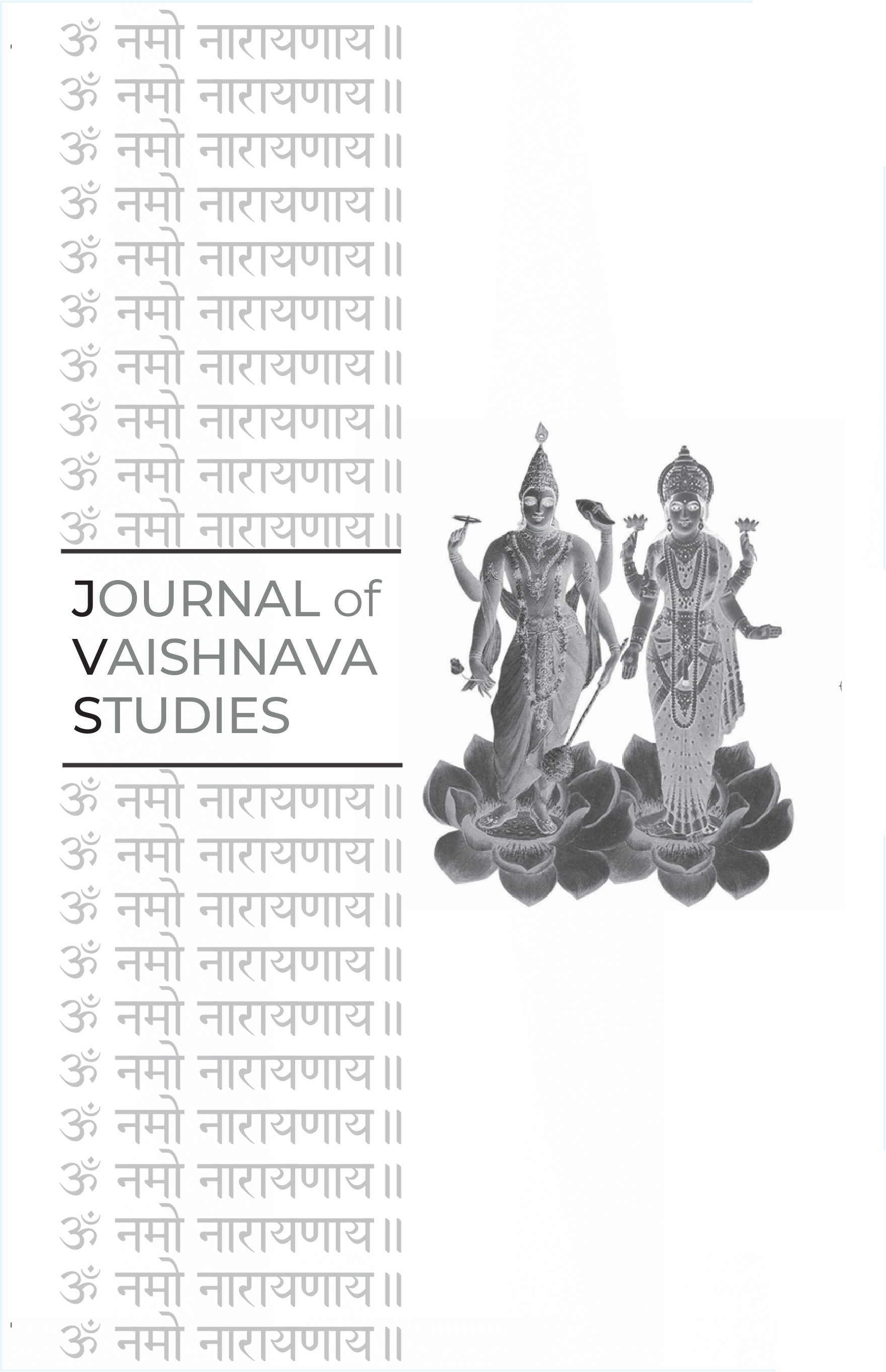From Nāma-Avatāra to Nāma-Saṅkīrtana: Gauḍīya Perspectives on the Name
Keywords:
Gauḍīya Vaiṣṇavism, nāma-avatāra, nāma-saṅkīrtana, theology of the name, śabda, svarūpa, Rūpa Gosvāmī, Jīva Gosvāmī, Kṛṣṇadāsa Kavirāja, Śikṣāṣṭaka, bhakti ontologyAbstract
Barbara A. Holdrege explores the richly layered ontology of the divine name in Gauḍīya Vaiṣṇava theology, emphasizing how the nāma (name) is not merely a symbolic referent but a genuine modality of God’s being. Drawing from seminal works by Rūpa Gosvāmī, Jīva Gosvāmī, and Kṛṣṇadāsa Kavirāja, Holdrege traces how the name operates both on a transcendent level—as nāma-svarūpa, identical with Kṛṣṇa’s essence—and on an immanent level, manifesting as nāma-avatāra, audible sound through human speech. The article outlines how Gauḍīya thinkers extend Vedic and Mīmāṁsā theories of śabda (eternal sound) to argue that names like “Kṛṣṇa” are self-manifesting and inherently efficacious, not products of human convention. Holdrege examines how the name functions as a descending form of divinity (avatāra), operative in devotional practices like nāma-saṅkīrtana, through which devotees directly encounter divine presence. She also discusses theological claims of nondifference (abheda) between the Lord’s name, form (vigraha), and essence (svarūpa), establishing the name as embodied transcendence. The article culminates in an analysis of Śikṣāṣṭaka and devotional literature to reveal how nāma-saṅkīrtana becomes the premier sādhanā for Kali Yuga, enabling liberation through ecstatic sound.Published
2009-06-20
Issue
Section
Articles





